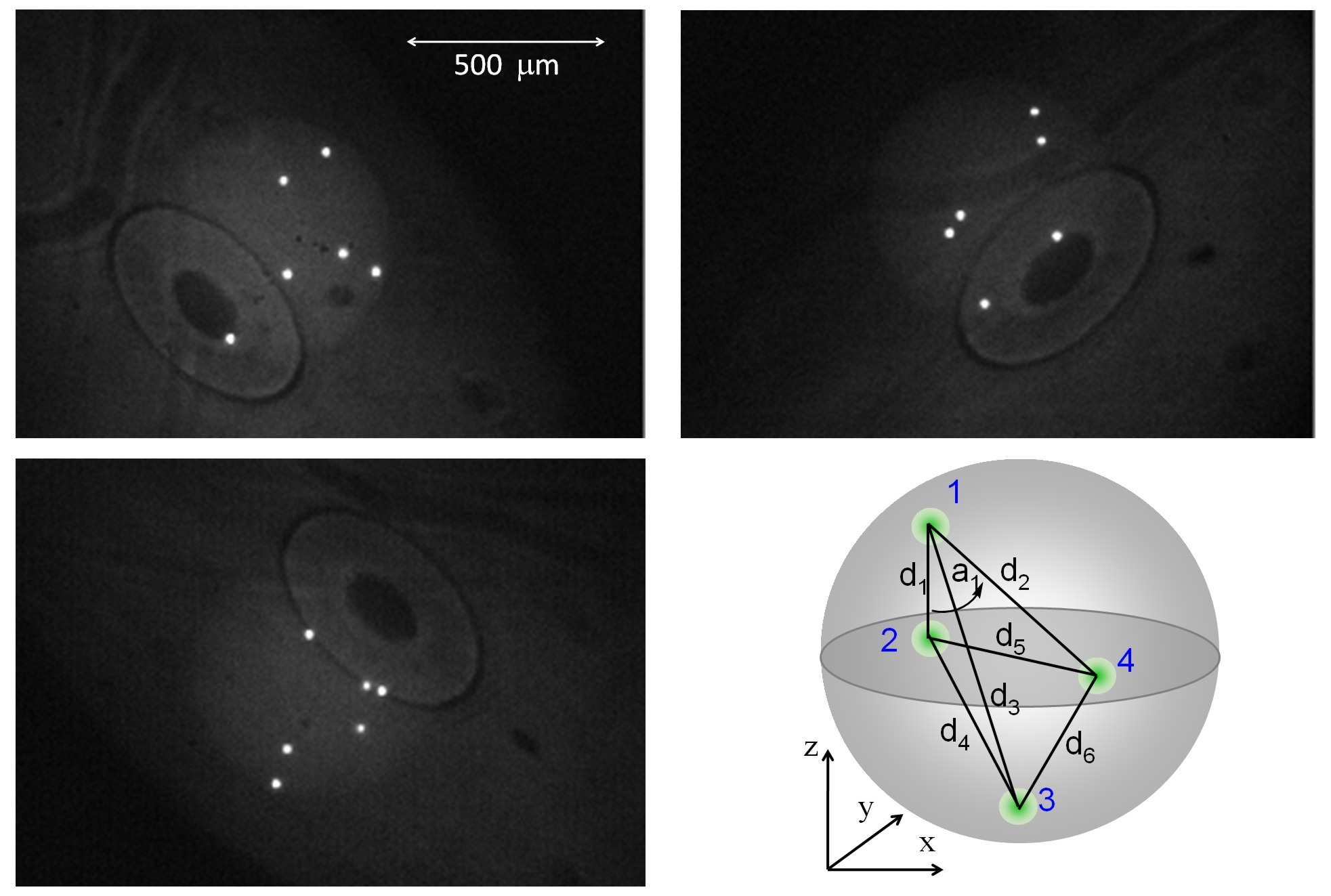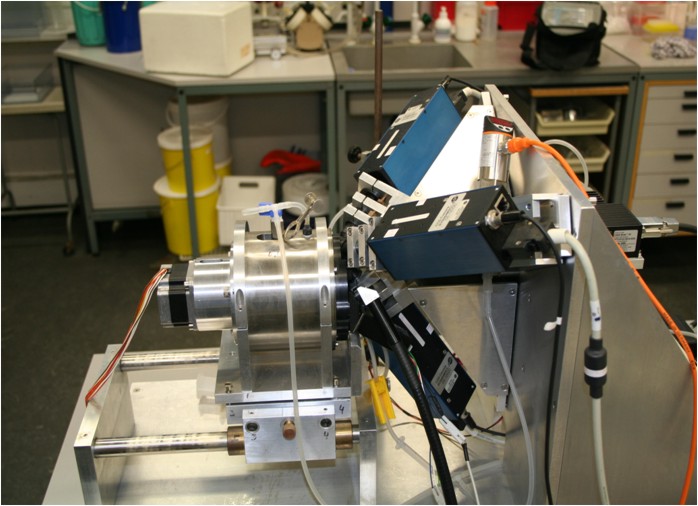Optical 3D-MPM-Encoding of Beads
CECB has a great interest in selection and combinatorial technology for the building and screening of molecular libraries. One of the most important technologies developed at CECB is a microsized 3D-equivalent to the all-important barcode we all use in our everyday life. This so-called Micro-Particle Matrix or MPM-encoding facilitate structure elucidation in a manner that is not comprimized by structural class or complexity. The decoding principles are completely detached from the target structures attached to the beads. The encoded macrobeads with a diameter of ~500 micron are polymerized with a novel detergent optimized for homogeneous formation of the desired macrobeads with even but random distribution of fluorescently labeled micro-particles. Decoding is performed through imaging of all beads in each library conversion step and in the hit identification step (Figure 1).


Figure 1. The three orthogonal (perpendicular) projections of an MPM-encoded bead which can be transformed into 3D coordinates used for the reading of the code (left), and the simple decoder instrument (right), which not only can read the three images but also reads a fluorescence signal as a result of the interaction of a fluorescently labelled protein with a resin bound ligand and automatically relate this to the ligand structure. This technology may significantly facilitate future combinatorial chemistry approaches.
